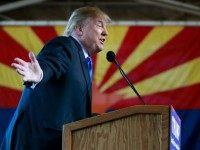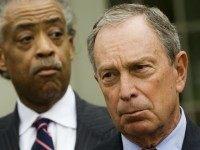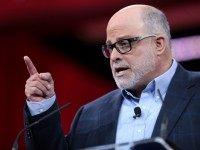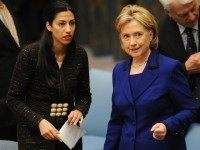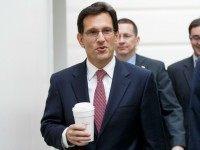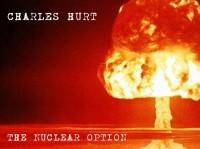The big winner in Iowa’s Republican caucuses on Monday night might not have been Ted Cruz. It may have been a nominating process that fails to yield a clear winner. A clear winner being a candidate who goes to Cleveland this summer with the presidential nomination in hand.
At the end of Monday night, which count really mattered? Delegates acquired. As of this writing, Cruz has bagged eight delegates, Trump and Rubio, seven each, with four other delegates going to also-rans.
Raw vote totals are what most folk tend to watch and weigh. But in 2016, it pays to more closely follow the candidates’ delegate totals. Thanks to the Republican National Committee (RNC), caucuses and primaries held prior to mid-March mandate proportional distribution of delegates based on candidates’ vote totals in given contests. Most early caucuses and primaries impose threshold minimums to win delegates (say, Alabama, with a 20% threshold).
Prior to Mid-March, 25 States, along with DC, Guam, and Puerto Rico, will hold proportional contests. That accounts for 1,022 bound delegates (“bound” being delegates committed to a candidate for the first vote). 45% of the bound delegates will be picked proportionally or in “hybrid” formats, which include triggering provisions for larger delegate yields for candidates who meet higher vote percentage thresholds. There are WTA (winner-take-all) thresholds, but those will be quite difficult to achieve.
Starting with Super Tuesday, March 15, most of the remaining states have opted to hold winner-take-all contests, though a handful will continue to make proportional distributions. From mid-March forward, 1,238 bound delegates will be chosen (Colorado’s delegates declare at convention).
The number of delegates needed to secure the GOP nomination is 1,237. There are a number of unbound (3 per state) and unpledged delegates. The unpledged delegates are mostly establishment picks who would factor in at a deadlocked convention.
Short of a breakout by one the major contenders (Trump, Cruz, and Rubio), it’s not hard to imagine a scenario where the proportional phase of the nominating process yields tightly packed delegate counts among the three. Complicating matters is if new life is breathed into the Carson, Kasich, or Christe campaigns (as improbable as that appears).
But, say you, won’t the nomination fight be resolved with Super Tuesday and the subsequent contests?
That could happen, but consider this prospect. Cruz, Rubio, and Trump take roughly a third each of the delegates in the proportional phase. For illustration, say, 340 delegates per man. That means in the winner-take-all phase, one of the principals would need to capture 897 of the available 1,238 bound delegates to win. That’s about 73% of the total or three out of every four delegates. Possible, but how likely? This assumes, too, that the principals are competitive with one another, affording each the chance to pick off states.
Cruz, Trump, and Rubio have the resources to stay the course. Trump is self-funding. Cruz’s fundraising operation is already solid and benefits all the more from his Iowa win. Rubio’s stronger than anticipated finish in Iowa boosts his fundraising. And as Rubio consolidates establishment voters -- as he began doing in Iowa -- and lesser establishment candidates drop out, expect a significant upswing in his campaign’s financial fortunes.
Writes Michael Snyder at “Before It’s News”:
[I]f no candidate is able to secure enough delegates, that means that we would end up with a “brokered convention”. The mechanics of a brokered convention can get quite complicated, but on a practical level what that would essentially mean is that the party establishment would get to hand select the nominee. And in case you are wondering, that would not be Donald Trump or Ted Cruz.
Snyder’s assessment is flawed in a couple of respects (though not his conclusion about the candidates).
“Deadlocked” versus a “brokered” convention, the more accurate designation is “deadlocked.” A brokered convention suggests that party bosses call the shots nearly exclusively. The party boss era in American politics is long past.
Though unpledged delegates -- who are likely establishment recruits -- will play a critical role at a deadlocked convention, it’s important to remember that bound delegates are only committed to their candidates on the first ballot.
Thereafter, they’re unbound. Candidates’ and, perhaps, dark horses’ (yes, a draft is possible) primary focus for vote gathering will be among all those plentiful unbound state delegates. If the convention deadlocks, it’s going to be the Wild West, with plenty of wheeling and dealing, barroom brawls, shoot-outs, shenanigans, and backroom deals. But all that will occur across delegations and not just among the establishment few.
Snyder’s guess that the nominee won’t be named “Cruz” or “Trump” should a deadlock occur is reasonable. Deadlocked conventions -- if past brokered conventions are any guide -- tend to nominee candidates who at least appear more centrist or moderate. At a deadlocked 2016 Cleveland affair, the buzz word may be “electable.” Right now, Marco Rubio seems to fit the bill. As Snyder pointed out in his article, that’s not an endorsement; it’s merely an observation.
If the Republican field narrows to two principal candidates, then the chances for a deadlocked convention melt away. But if, as anticipated, Cruz, Trump, and Rubio (and possibly one or two others) remain in the race, then a deadlocked convention moves from “maybe” to “probable” with each passing primary, caucus, and state convention. The Republican presidential nominee who emerges will have done so after the fight of his political life – and ours.
The big winner in Iowa’s Republican caucuses on Monday night might not have been Ted Cruz. It may have been a nominating process that fails to yield a clear winner. A clear winner being a candidate who goes to Cleveland this summer with the presidential nomination in hand.
At the end of Monday night, which count really mattered? Delegates acquired. As of this writing, Cruz has bagged eight delegates, Trump and Rubio, seven each, with four other delegates going to also-rans.
Raw vote totals are what most folk tend to watch and weigh. But in 2016, it pays to more closely follow the candidates’ delegate totals. Thanks to the Republican National Committee (RNC), caucuses and primaries held prior to mid-March mandate proportional distribution of delegates based on candidates’ vote totals in given contests. Most early caucuses and primaries impose threshold minimums to win delegates (say, Alabama, with a 20% threshold).
Prior to Mid-March, 25 States, along with DC, Guam, and Puerto Rico, will hold proportional contests. That accounts for 1,022 bound delegates (“bound” being delegates committed to a candidate for the first vote). 45% of the bound delegates will be picked proportionally or in “hybrid” formats, which include triggering provisions for larger delegate yields for candidates who meet higher vote percentage thresholds. There are WTA (winner-take-all) thresholds, but those will be quite difficult to achieve.
Starting with Super Tuesday, March 15, most of the remaining states have opted to hold winner-take-all contests, though a handful will continue to make proportional distributions. From mid-March forward, 1,238 bound delegates will be chosen (Colorado’s delegates declare at convention).
The number of delegates needed to secure the GOP nomination is 1,237. There are a number of unbound (3 per state) and unpledged delegates. The unpledged delegates are mostly establishment picks who would factor in at a deadlocked convention.
Short of a breakout by one the major contenders (Trump, Cruz, and Rubio), it’s not hard to imagine a scenario where the proportional phase of the nominating process yields tightly packed delegate counts among the three. Complicating matters is if new life is breathed into the Carson, Kasich, or Christe campaigns (as improbable as that appears).
But, say you, won’t the nomination fight be resolved with Super Tuesday and the subsequent contests?
That could happen, but consider this prospect. Cruz, Rubio, and Trump take roughly a third each of the delegates in the proportional phase. For illustration, say, 340 delegates per man. That means in the winner-take-all phase, one of the principals would need to capture 897 of the available 1,238 bound delegates to win. That’s about 73% of the total or three out of every four delegates. Possible, but how likely? This assumes, too, that the principals are competitive with one another, affording each the chance to pick off states.
Cruz, Trump, and Rubio have the resources to stay the course. Trump is self-funding. Cruz’s fundraising operation is already solid and benefits all the more from his Iowa win. Rubio’s stronger than anticipated finish in Iowa boosts his fundraising. And as Rubio consolidates establishment voters -- as he began doing in Iowa -- and lesser establishment candidates drop out, expect a significant upswing in his campaign’s financial fortunes.
Writes Michael Snyder at “Before It’s News”:
[I]f no candidate is able to secure enough delegates, that means that we would end up with a “brokered convention”. The mechanics of a brokered convention can get quite complicated, but on a practical level what that would essentially mean is that the party establishment would get to hand select the nominee. And in case you are wondering, that would not be Donald Trump or Ted Cruz.
Snyder’s assessment is flawed in a couple of respects (though not his conclusion about the candidates).
“Deadlocked” versus a “brokered” convention, the more accurate designation is “deadlocked.” A brokered convention suggests that party bosses call the shots nearly exclusively. The party boss era in American politics is long past.
Though unpledged delegates -- who are likely establishment recruits -- will play a critical role at a deadlocked convention, it’s important to remember that bound delegates are only committed to their candidates on the first ballot.
Thereafter, they’re unbound. Candidates’ and, perhaps, dark horses’ (yes, a draft is possible) primary focus for vote gathering will be among all those plentiful unbound state delegates. If the convention deadlocks, it’s going to be the Wild West, with plenty of wheeling and dealing, barroom brawls, shoot-outs, shenanigans, and backroom deals. But all that will occur across delegations and not just among the establishment few.
Snyder’s guess that the nominee won’t be named “Cruz” or “Trump” should a deadlock occur is reasonable. Deadlocked conventions -- if past brokered conventions are any guide -- tend to nominee candidates who at least appear more centrist or moderate. At a deadlocked 2016 Cleveland affair, the buzz word may be “electable.” Right now, Marco Rubio seems to fit the bill. As Snyder pointed out in his article, that’s not an endorsement; it’s merely an observation.
If the Republican field narrows to two principal candidates, then the chances for a deadlocked convention melt away. But if, as anticipated, Cruz, Trump, and Rubio (and possibly one or two others) remain in the race, then a deadlocked convention moves from “maybe” to “probable” with each passing primary, caucus, and state convention. The Republican presidential nominee who emerges will have done so after the fight of his political life – and ours.





















